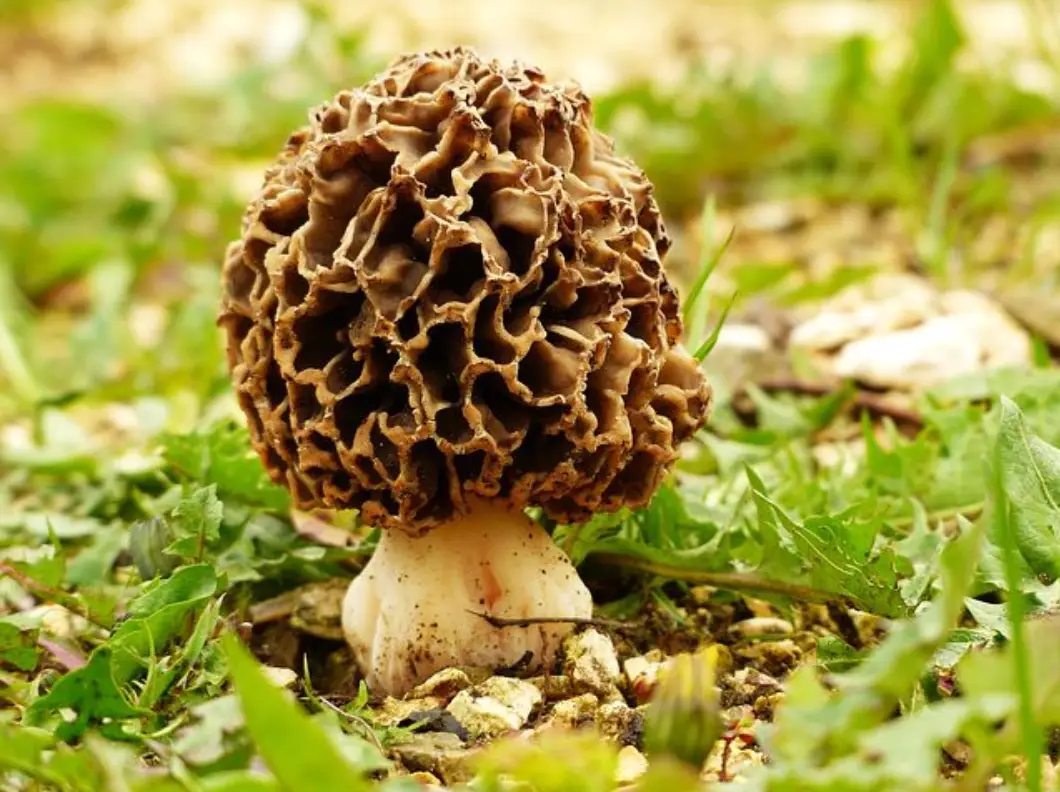The term ‘Fungi’ is used for those plants which lack chlorophyll and are, therefore, heterotrophic. Being the members of Thallophyta, their plant body is simple and is not differentiated into root, stem and leaves.
The branch that deals with fungi is known as ‘Mycology’. It included the study of mushrooms only to begin with. The credit for laying the foundation of present day mycology goes to Italian Botanist Pier’ Antonio Micheli who included his researches on fungi in a book-Nova Plantarum Genera published in 1729.
Fungi include 100,000 species, of which 40,000 are known to be valid species leaving 60,000 to be investigated and described in future. The earlier fungal taxonomists included bacteria also in this group, the practice which is now completely discarded. The members of this heterotrophic group exist either as parasities or saprophytes. Special absorbing organs called haustoria are developed for this purpose. Thallus is either coenocytic (aseptate) or septate forming compact structures like mushrooms, morels, etc. Hyphal system (filamentous) forms a thallus and is called mycelium. The cell wall is typically made of chitin while the reserve food occurs mainly in the form of glycogen. Both asexual and sexual methods of reproduction are known in fungi. Asexual reproduction is through different types of spores like zoospores, conidiospores, basidiospores, chlamydospores, etc. Sexual reproduction in fungi is extremely reduced. In lower members distinct sexual reproduction is present but is gradually reduced in higher members and finally it is found to be absent in Fungi imperfecti.
The diseases caused by this group have rendered it sufficient economic importance. The members of this group attack plants as well as animals including the human beings. Since the fungi are principal agents of decay, so through the decomposition of organic matter, they play an essential role in the nutrition of the green plants. Contrary to these harmful activities, fungi serve as food, used in preparation of medicines and antibiotics, and are employed in many industrial processes.
Fungi have been variously classified by numerous mycologists, time and again: Basically the group was divided into five classes-Myxomycetes, Phycomycetes, Ascomycetes, Basidiomycetes and Deuteromycetes. This classification was the most convenient. However, the trend now is to treat fungi as a kingdom rather than as a sub-group of Thallophyta equal in rank to algae. One of such classifications was proposed by G.C. Ainsworth (1973).
CLASSIFICATION OF FUNGI
CHARACTERS OF FUNGI
KINGDOM MYCOTA (FUNGI)
- Chlorophyll absent
- Reserve food glycogen
- Cell wall of fungal cellulose
DIVISION I. MYXOMYCOTA
- Thallus without cell walls
- Thallus a naked mass of protoplasm
CLASS :- PLASMODIOPHOROMYCETES
- Plasmodium parasitic within the cells of host plants
Order :- Plasmodiophorales
- Swarm cells anteriorly biflagellate
Family :- Plasmodiophoraceae
- Vegetative development within the host cells
Example :-Plasmodiophora
DIVISION II. EUMYCOTA
- Presence of definite cell wall throughout the vegetative phase.
SUB-DIVISION 1. MASTIGOMYCOTINA
- Presence of motile spores or zoospores
- Oospores produced as a result of sexual reproduction
CLASS 1. CHYTRIDIOMYCETES
- Thallus usually unicellular
- Zoospores uniflagellate (flagella whiplash type)
Order :- Chytridiales
- Asexual reproduction by posteriorly uniflagellate zoospores
Family :- Synchytriaceae
- Thallus endobiotic, holocarpic, directly forms a sorus or prosorus
Example :- Synchytrium
CLASS 2. OOMYCETES
- Thalli usually mycelial (mycelium aseptate)
- Zoospores biflagellate (posterior flagellum whiplash type and anterior tinsel type)
- Cell wall cellulosic
Order 1. Saprolegniales
- Mycelial thallus extensive and without a conspicuous hold fast
- Members aquatic, often called water molds
- Sporangia cylindrical
Family :- Saprolegniaceae
- Oogonium with many eggs and lacks perioplasm
Examples :- Saprolegnia, Achlya
Order 2. Peronosporales
- Sexual reproduction aplanogametic and oogamous
- Primarily terrestrial-in soil or parasitic on vascular plants
- oogonium with a single egg surrounded by periplasm
Family 1. Pythiaceae
- Sporangiophores similar to somatic hyphae or if different, indeterminate in growth
Examples :- Pythium, Phytophthora
Family 2. Peronosporaceae
- Sporangiophores dichotomously branched, determinate
- Sporangia borne singly at the tips of branches
Examples :- Sclerospora, Peronospora
Family 3. Albuginanceae
- Mycelium intercellular and provided with knob-like haustoria
- Conidia in basipetal chains on clavate, unbranched conidiophores
Example :- Albugo
SUB-DIVISION 2. ZYGOMYCOTINA
- Asexual reproduction by non-motile spores, aplanospores, perfect stage sporezygospore formed
CLASS :- ZYGOMYCETES
- Gametangia morphologically similar
- Sexual reproduction results in the formation of zygospores
Order :- Mucorales
- Mostly saprophytic
- Asexual reproduction by typical non-motile aplanospores
Family 1. Mucoraceae
- Sporangia with many spores and well developed columella
- Sporangial wall relatively thin and easily breakable or deliquescent
- Suspensors rarely tong-like
Examples :- Rhizopus, Mucor
Family 2. Pilobolaceae
- Sporangia with many spores with moderate sized columella
- Sporangium wall thickened above and not breaking up or deliquescent.
- Sporangium violently discharged or passively discharged as a unit
- Suspensor always tong-like
Example :- Pilobolus
SUB-DIVISION 3. ASCOMYCOTINA
- Mycelium septate, if not reproduces by budding
- Ascospores borne endogenously in ascus
- Ascospores in definite numbers, in multiples of two, usually eight.
CLASS 1. HEMIASCOMYCETES
- Thallus yeast-like or unicellular
- Asci naked and formed directly from the zygotes
- Ascogenous hyphae and ascocarps not formed
Order :- Endomycetales
- Mostly saprophytes
- Zygote unicellular, forms ascus directly
Family :- Saccharomycetaceae
- Cells multiply by budding
Example :- Saccharomyces
Class 2. Plectomycetes
- Ascocarp, a cleistothecium
Order 1. Erysiphales
- Ectoparasites
Family :- Erysiphaceae
- Aerial mycelium hyaline
- Enormous production of conidia on host surface gives it a white powdery appeamce
Erysiphe, Sphaerotheca, Phyllactinia
Order 2. Eurotiales
- Ascocarp – a cleistothecium
Family :- Eurotiaceae
- Asci scattered, 8-spored, thin walled, ascospores unicellular
- Hymenium not formed
- Peridium (outer wall of cleistothecium) of closely interwoven hyphae
Examples :- Aspergillus, Penicillium
Class 3. Pyrenomycetes
- Ascocarp, a perithecium
Order :- Sphaeriales
- Ascocarp borne singly or in stroma, dark, membranous or carbonous
Family 1. Sordariaceae
- Perithecia dark coloured, not in stroma, free
- Ostiole lined by periphyses
Example :- Neurospora
Family 2. Xylariaceae
- Perithecia embedded in stroma
- Stroma consisting entirely of fungus tissue
- Ascospores dark and inequilateral
Example :- Xylaria
Family 3. Clavicipitaceae
- Perithecia develop on fleshy stroma, ostiolate
- Perforated cap at the apex of ascus
- Ascospores long, narrow, often breaking up into short segments
Example :- Claviceps
Class 4. Discomycetes
- Ascocarp, an apothecium
Order :- Pezizales
- Apothecia fleshy or leathery
- Apothecia usually not in stroma
- Asci opening by a lid or operculum
Family 1. Pezizaceae
Family 2. Helvellaceae
- Apothecia not cup-shaped
- Apothecia differentiated into stipe and pileus
Example :- Morchella
SUB-DIVISION 4. BASIDIOMYCOTINA
- Mycelium septate
- Characteristic reproductive body is basidium
- Basidiospores usually four, produced exogenously
CLASS 1. TELIOMYCETES
- Basidiocarp lacking
- Teliospores or chlamydospores in sori or scattered
- parasitic on vascular plants
Order 1 :- Ustilaginales
- Mycelial hyphae in the host inter-as well as intracellular
- Telio- or teleutospores mostly intercalary, basidiospores not on sterigmata
- Basidiospores indefmite in numbe
Family Ustilaginaceae
- Chlamydospores formed in the host tissue from hyphal cells
Examples :- Ustilago, Sphacelotheca
Order 2. Uredinales
- Teleutospores formed terminally
- Four basidiol’pores per basidium, Basidiospores on sterigmata
- Infected plant rusty in colour
Family :- Pucciniaceae
- Teleutospores stalked
- Teleutospores free or united but never in the form of layer
Examples :- Puccinia, Uromyces
CLASS 2. HYMENOMYCETES
- Basidiocarp usually well-developed
- Mostly saprobic.
Sub-class :- Holobasidiomycetidae
- Basidia aseptate (holobasidia), club-shaped.
Order 1. Exobasidiales
- Basidiocarp present
- Basidia covering the surface of host tissue
Family :- Exobasidiaceae
- Basidiocarp septate prior to germination
- Basidia club-shaped and formed externally
Example :- Exobasidium
Order 2. Agaricales
- Basidia borne on lamellae
- Basidiocarp soft and putrescent
Family :- Agaricaceae
- Basidiocarp fleshy
- Gills narrow in section
Example :- Agaricus
Order 3. Aphyllopborales
- Basidiocarp developed gymnocarpously on the outer side
- Texture of basidiocarp not soft and putrescent
Family :- Polyporaceae
- Basidia line the inner surface of the pore or tube
- Pores or tubes generally deep
Examples :- Polyporus
CLASS 3. GASTEROMYCETES
- Basidiocarps pennanently closed (angiocarpous)
- Basidia do not become exposed until the spores are mature
Order :- Lycoperdales
- Glebal cavities usually not separating from the peridium or from each other
- Gleba powdery
- Spores light coloured and small
Family :- Lycoperdaceae
- Peridium distinguished into two layers
- Presence of capillitium among spores
Example :- Lycoperdon
SUB-DIVISION 5. DEUTEROMYCOTINA
- Mycelium septate
- Perfect stages not known
- Reproduction by asexual means only
CLASS 1. HYPHOMYCETES
- Mycelium sterile or bearing spores directly or on special branches
- Not aggregated in pycnidia or acervuli
Order :- Moniliales
- Conidia borne on free conidiophores
Family 1. Dematiaceae
- The mycelium, conidiophores and usually the conidia are brown or black in colour
Examples :- Alternaria, Cercospora, Helminthosporium
Family 2. Moniliaceae
- Conidia are borne on free conidiophores, pycnidia or acervuli never fonned
Example :- Piricularia
Family 3. Tuberculariaceae
- Conidiophores usually rather short arising more or less radially from sporodochia
Example :- Fusarium
CLASS 2. COELOMYCETES
- Thallospores or conidia bome in pycnidium or acervulus
Order :- Melanconiales
- Conidia in acervuli, immersed in substratum
- Conidia black or light coloured, accompanied by setae or not
Family :- Melanconiaceae
- Single fonn-family
- Example :- Colletotrichum


Leave a Reply